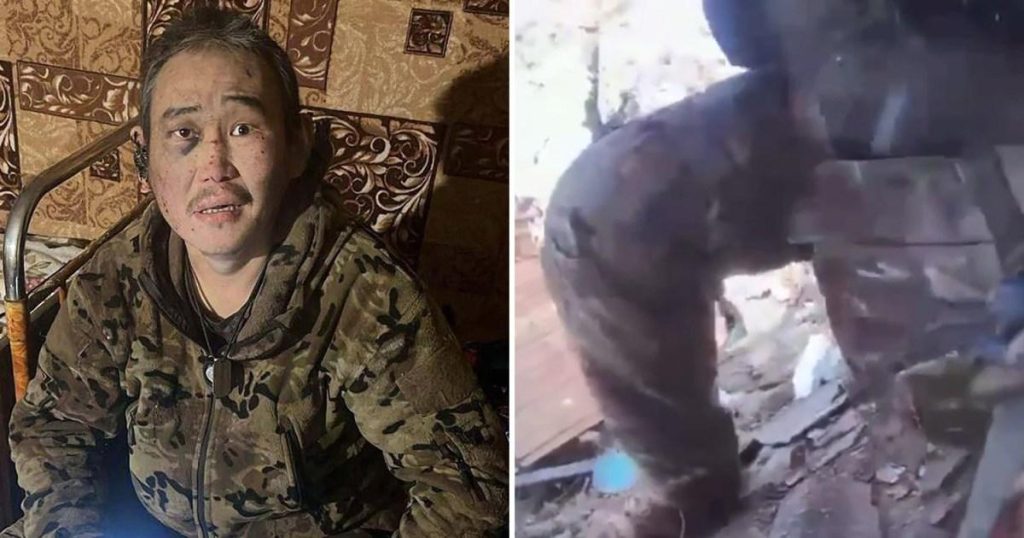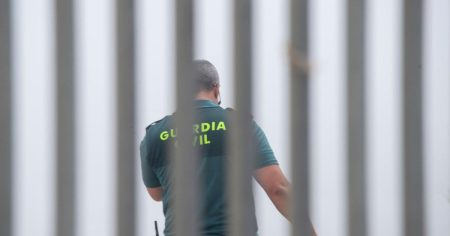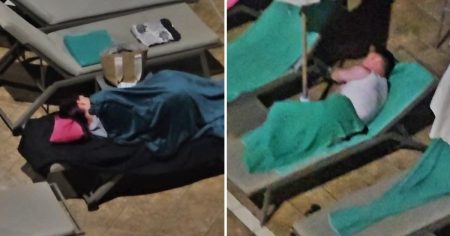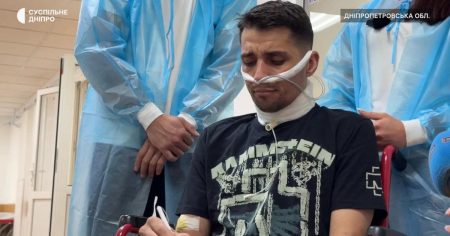This harrowing account details a brutal knife fight between two soldiers on the Ukrainian frontline, captured on helmet camera footage. The graphic nature of the video underscores the stark reality of war, where even amidst the deployment of advanced weaponry like drones and hypersonic missiles, the conflict can descend into savage hand-to-hand combat, a grim reminder of the primal and personal nature of violence that persists even in modern warfare. The footage, believed to be from Trudove in the Zaporizhzhia region, likely filmed in autumn but only recently released, lays bare the raw and visceral nature of the conflict.
The video begins with an exchange of gunfire between the two soldiers amidst the rubble of bombed-out buildings. The fight escalates when the Ukrainian soldier grabs the barrel of his opponent’s rifle, initiating a struggle that quickly devolves into a desperate grapple on the ground. The Ukrainian soldier’s words, “You came to [invade] my homeland,” capture the essence of the conflict, highlighting the defensive nature of the Ukrainian resistance against what they perceive as an unwarranted invasion. This short, powerful statement underscores the deeply personal stakes of the war for Ukrainian soldiers defending their territory and loved ones.
The fight culminates with the Russian soldier, identified as Tuta, gaining the upper hand and inflicting mortal wounds on his Ukrainian opponent. Recognizing his imminent death, the Ukrainian soldier’s final moments are captured on camera. He addresses his mother with a poignant farewell, “That’s it, mum. Goodbye,” a heartbreaking testament to the human cost of the conflict and the devastating impact on families torn apart by war. He then pleads with his killer, “Let me die in peace,” expressing the agony of his wounds and his desire for a swift and merciful end. His repeated pleas, “Don’t touch me, let me die,” reveal the raw vulnerability of a dying man, stripped bare of all pretense and facing the ultimate reality of his mortality.
The Russian soldier, despite his victory, displays a moment of hesitation. With blood on his face and a knife still visible, he appears momentarily taken aback by the Ukrainian soldier’s pleas and backs away, uttering a simple “goodbye” in response. This brief exchange, amidst the brutality of the fight, offers a glimpse of the complex and often conflicting emotions that soldiers on both sides of the conflict may experience. While engaged in mortal combat, they are also human beings capable of acknowledging the shared humanity of their opponents. Tuta’s response, while not an expression of remorse, suggests a recognition of the weight of his actions and the tragic loss of life.
The release of this footage has sparked a range of reactions, particularly within Russian war channels, where calls have arisen for Tuta to be decorated for bravery. This exemplifies the contrasting narratives and interpretations of the conflict, highlighting the complex and often polarized perspectives on acts of violence within the context of war. While some may view Tuta’s actions as heroic, others will undoubtedly see them as a tragic illustration of the brutality and dehumanizing nature of conflict. The call for his commendation underscores the differing values and priorities that shape perceptions of war and heroism.
This incident, captured in its raw and unsettling detail, transcends the statistics and headlines that often dominate war reporting. It forces viewers to confront the brutal reality of the conflict on a deeply personal level, witnessing the final moments of a soldier fighting for his homeland and the complex reactions of his adversary. The footage serves as a stark reminder of the human cost of war, the individual tragedies that unfold amidst the larger geopolitical struggles, and the enduring impact on both the victims and those who inflict violence. The stark contrast between the high-tech weaponry of modern warfare and the primal nature of hand-to-hand combat emphasizes the enduring presence of brutality and the deeply personal nature of conflict, even in the 21st century.











